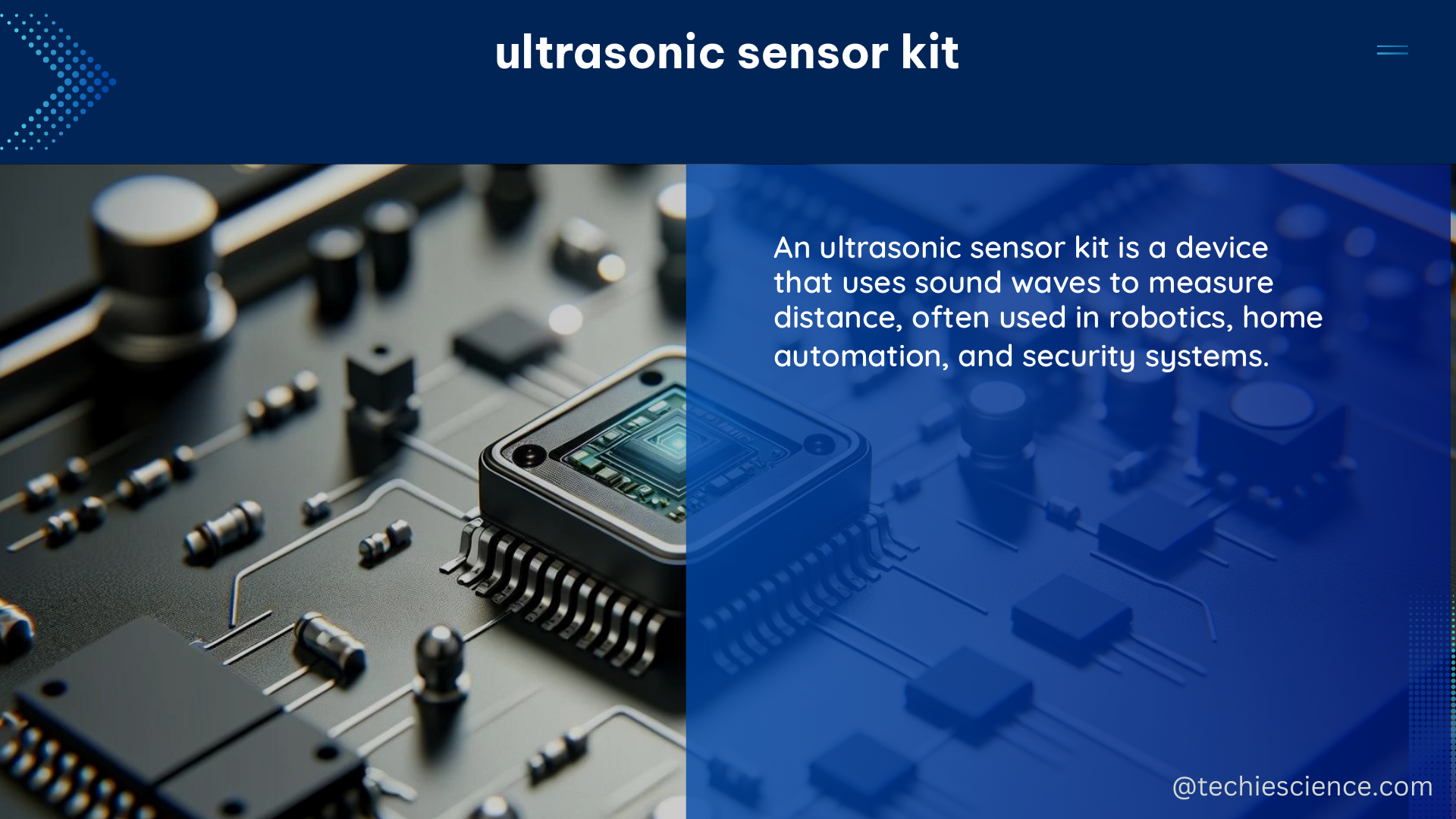Ultrasonic sensor kits are versatile tools that utilize high-frequency sound waves to detect and measure distances, making them invaluable in a wide range of applications, from non-destructive testing to robotics and automation. This comprehensive guide delves into the technical specifications, performance metrics, and practical applications of these remarkable devices, providing a detailed and data-driven exploration of the world of ultrasonic sensor kits.
Technical Specifications
Frequency Range
Ultrasonic sensor kits typically operate within a frequency range of 20 kHz to 500 kHz, with some specialized models capable of reaching up to 1 MHz. The choice of frequency depends on the specific application, as higher frequencies offer improved resolution and accuracy, while lower frequencies can penetrate materials more effectively.
Detection Range
The detection range of ultrasonic sensor kits varies widely, with some models capable of measuring distances from a few millimeters up to several meters. The range is influenced by factors such as the sensor’s power output, the target material’s reflectivity, and environmental conditions like temperature and humidity.
Angular Coverage
Ultrasonic sensors can be designed with narrow or wide angular coverage, typically ranging from 15° to 90°. The angular coverage determines the sensor’s field of view and is crucial in applications where the orientation and positioning of the target object are critical.
Resolution
The resolution of an ultrasonic sensor kit refers to the minimum distance that can be distinguished between two objects. This is typically expressed in millimeters or micrometers, with high-end sensors capable of resolutions as fine as 0.1 mm.
Accuracy
The accuracy of an ultrasonic sensor kit is the degree to which its measurements correspond to the actual values. This is often expressed as a percentage of the measured value or in absolute terms, such as ±1 mm. Factors like temperature, humidity, and target material can affect the sensor’s accuracy.
Repeatability
Repeatability is the ability of an ultrasonic sensor to produce the same output when measuring the same input multiple times. It is usually expressed as a percentage of the measured value or in absolute terms, such as ±1 mm. Consistent repeatability is crucial for applications that require reliable and consistent measurements.
Operating Temperature
Ultrasonic sensor kits are designed to operate within a wide temperature range, typically from -40°C to +85°C, depending on the model and application. This broad temperature tolerance ensures their reliability in diverse environmental conditions.
Response Time
The response time of an ultrasonic sensor kit is the time it takes for the sensor to produce an output after detecting a change in the input. This is usually expressed in milliseconds or microseconds and is an important factor in applications that require rapid detection and response.
Applications and Performance Metrics

Ultrasonic sensor kits find applications in a variety of industries and fields, including:
-
Non-Destructive Testing (NDT): Ultrasonic testing (UT) is a widely used NDT method for inspecting materials for defects, such as cracks, corrosion, and delaminations, without damaging the part. Ultrasonic sensor kits are essential in this process, providing high-resolution imaging and accurate measurements.
-
Robotics and Automation: Ultrasonic sensors are used in robotics and automation for object detection, distance measurement, and collision avoidance, enabling precise control and navigation.
-
Level Measurement: Ultrasonic sensors can accurately measure the level of liquids or bulk solids in tanks, silos, and other containers, providing valuable data for process control and inventory management.
-
Flow Measurement: Ultrasonic sensors can measure the flow rate of liquids or gases in pipes and channels, supporting applications in fluid dynamics and process optimization.
-
Presence Detection: Ultrasonic sensors can detect the presence or absence of objects, making them suitable for intrusion detection, people counting, and automated door systems.
The performance of ultrasonic sensor kits can be evaluated using various metrics, such as:
-
Detection Probability: The probability of detecting a target object or defect within a given range and under specific conditions.
-
False Alarm Rate: The frequency of false alarms, i.e., incorrect detections of objects or defects that do not exist.
-
Signal-to-Noise Ratio (SNR): The ratio of the signal strength to the background noise level, which indicates the sensor’s ability to distinguish the target signal from the noise.
-
Dynamic Range: The range of signal amplitudes that the sensor can measure accurately, from the smallest to the largest signals.
-
Linearity: The degree to which the sensor’s output is proportional to the input, ensuring consistent and predictable measurements.
By understanding the technical specifications and performance metrics of ultrasonic sensor kits, users can select the most appropriate devices for their specific applications, ensuring reliable and accurate measurements that drive innovation and efficiency across a wide range of industries.
References
- Bourgeois, L., Chapuis, B., & Recoquillay, A. (2018). Application of the linear sampling method to ultrasonic non-destructive testing of an elastic waveguide. Inverse Problems, 34(5), 055001.
- García-Martín, J., Gómez-Gil, J., & Vázquez-Sánchez, E. (2011). Non-destructive techniques based on eddy current testing. Sensors, 11(1), 101-124.
- NASA Technical Reports Server. (n.d.). Non-destructive evaluation of composite materials using ultrasonic phased arrays. Retrieved from https://ntrs.nasa.gov/citations/20180002275.

The lambdageeks.com Core SME Team is a group of experienced subject matter experts from diverse scientific and technical fields including Physics, Chemistry, Technology,Electronics & Electrical Engineering, Automotive, Mechanical Engineering. Our team collaborates to create high-quality, well-researched articles on a wide range of science and technology topics for the lambdageeks.com website.
All Our Senior SME are having more than 7 Years of experience in the respective fields . They are either Working Industry Professionals or assocaited With different Universities. Refer Our Authors Page to get to know About our Core SMEs.